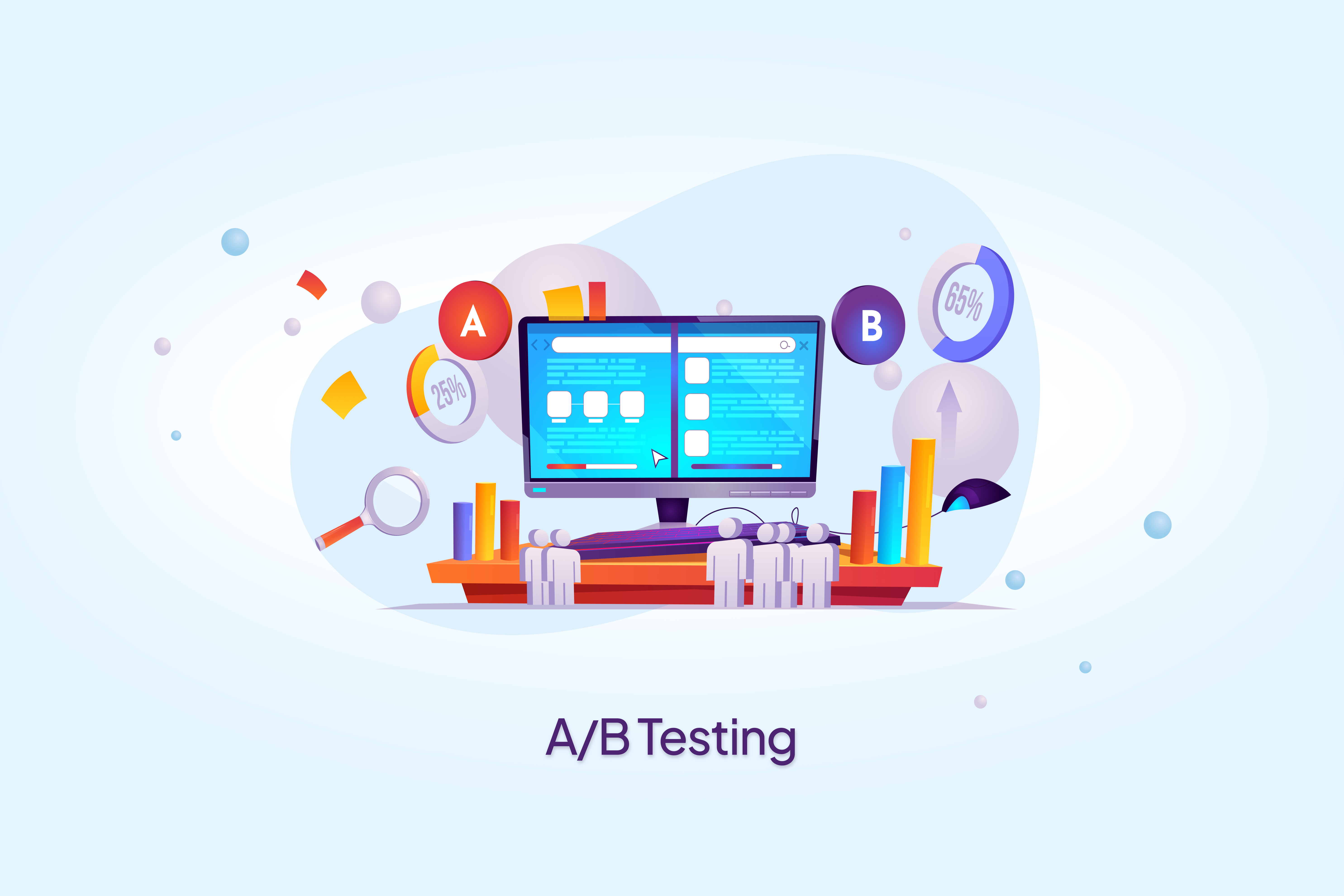What’s A/B testing?
A/B testing, also known as split testing or bucket testing, is a statistical method used in marketing, product development, and user experience (UX) design to compare two versions of a webpage, app, or marketing campaign to determine which one performs better in terms of specific goals or metrics. It is a way to experiment and evaluate different variations and make data-driven decisions.
A/B testing allows organizations to make data-informed decisions about their products, services, or marketing strategies. It helps optimize user experiences, increase conversion rates, and refine designs based on real-world user feedback.
In A/B testing, two variants, commonly referred to as A and B, are created. The A variant represents the original or current version, often called the "control," while the B variant is the modified version, also known as the "treatment" or "challenger." These variants are then simultaneously presented to randomly divided groups of users or visitors, who are unaware of the testing.
How does A/B testing work?
A/B testing takes a webpage or app screen and then modifies it to create another version of the same page. This change can be either a single headline, button or a complete redesign of that page. Then, half of your viewers are shown the original version of the page, and the other half is shown the modified version of the page.
As viewers are served either the first or the second version, their engagement with each experience is measured and collected in a dashboard, to be analyzed through a statistical engine. You can then determine whether the experience brought in by the new version had a better outcome than the previous version.
Why A/B testing?
Data-driven decision-making: A/B testing allows businesses to make informed decisions based on evidence rather than relying on assumptions or personal preferences. By conducting controlled experiments and collecting data, organizations can gain insights into what works best for their target audience.
Optimization and improvement: A/B testing helps optimize and improve different aspects of a product or marketing strategy. By testing different variations, organizations can identify the most effective design, content, layout, pricing, or any other element that drives better results.
User experience enhancement: A/B testing enables organizations to focus on enhancing the user experience. By testing different user interfaces, features, or interactions, businesses can understand user preferences and behavior, leading to improvements that make the product or service more intuitive, engaging, and satisfying for users.
Conversion rate optimization: A primary goal of A/B testing is to improve conversion rates. Whether it's increasing sign-ups, purchases, clicks, or any other desired action, A/B testing helps identify the factors that positively impact conversions. This optimization can lead to increased revenue, customer acquisition, and overall business success.
Risk mitigation: A/B testing allows organizations to mitigate risks associated with implementing changes without solid evidence. By testing variations on a small scale before rolling them out to a larger audience, businesses can identify and rectify potential issues or negative impacts early on, minimizing the risk of a failed campaign or product launch.
Cost-effectiveness: A/B testing can be a cost-effective strategy compared to making large-scale changes based on assumptions. By testing variations on a small sample size, businesses can avoid investing heavily in changes that may not yield the desired results. Instead, resources can be focused on implementing changes that are proven to be effective.
In conclusion, A/B testing is important because it enables data-driven decision-making, optimization, user experience enhancement, conversion rate optimization, risk mitigation, and cost-effectiveness. By conducting controlled experiments and analyzing user behavior, organizations can make informed decisions and continuously improve their offerings, resulting in better outcomes and increased success.




%20(1).png?width=352&name=image.png%20(4)%20(1).png)